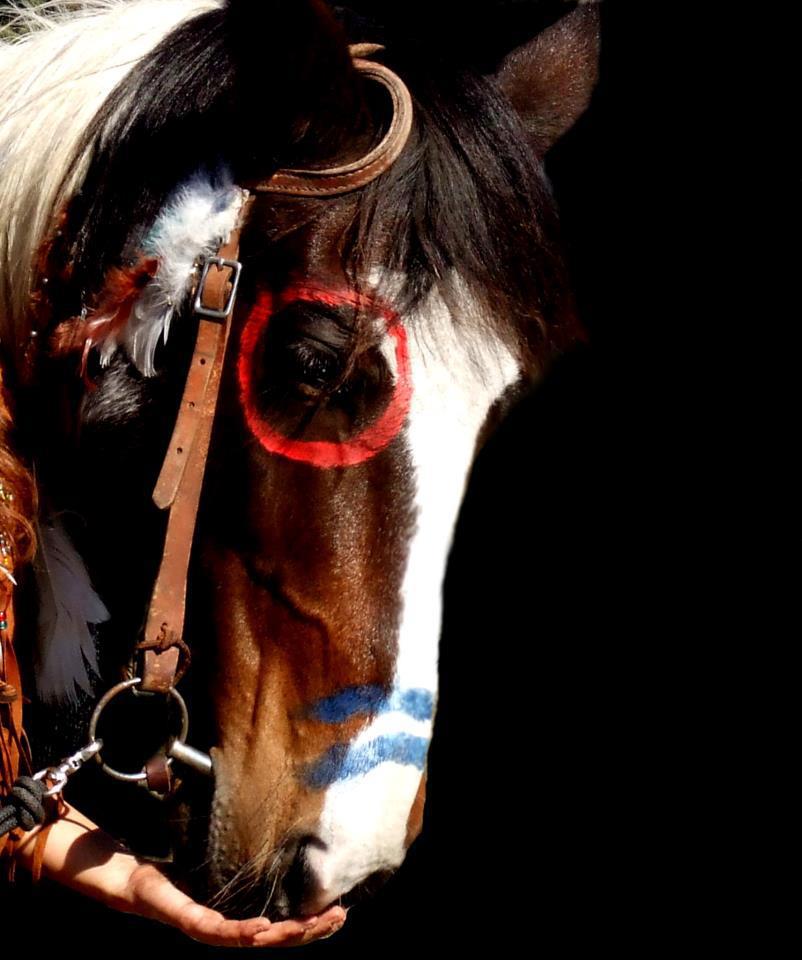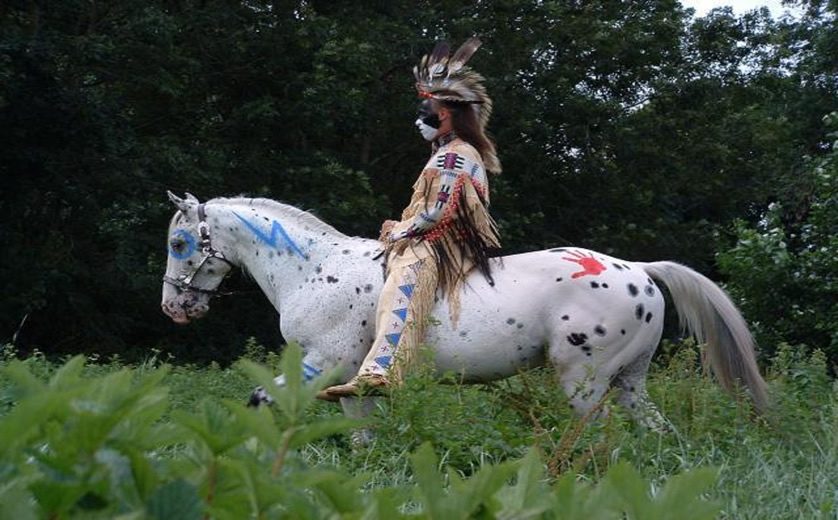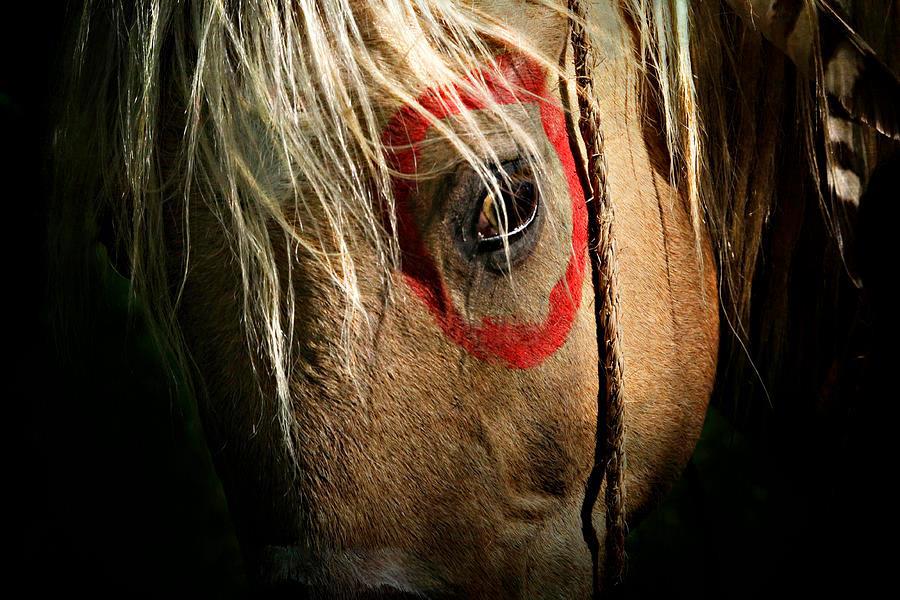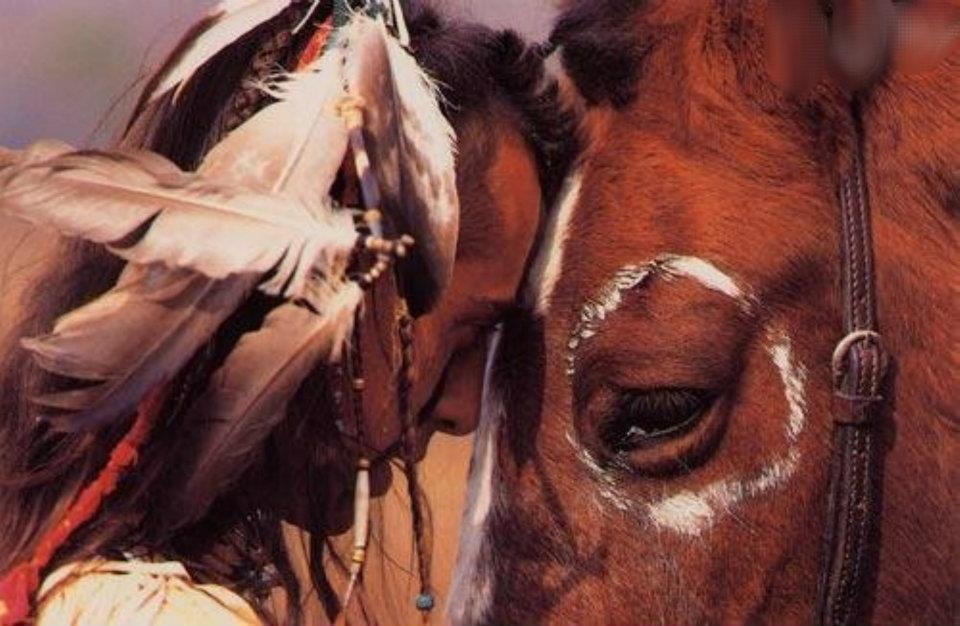The horse has been an integral part of Native American culture for centuries, influencing everything from transportation and hunting to warfare and trade. Once introduced to the Americas by Spanish conquistadors in the 16th century, horses quickly spread throughout the continent, transforming the way of life for many indigenous peoples. This article aims to explore the rich history of the horse and its impact on the American Indian. We will delve into the arrival of the horse to the Americas, its adoption by Native American groups, and the profound influence it had on daily life, culture, and identity.
Introduction to the Horse in the Americas
The horse has played a significant role in the history of the American Indian, but it was not always present in the Americas. In fact, horses were not native to the Americas, but rather, arrived here through Spanish colonization. Before the arrival of the horse, Native American tribes relied on various transportation methods to move around, such as walking, boats, and dogsleds.
The Evolution of Horses
Horses have been around for millions of years, with the first species evolving in North America. However, they became extinct in North America around 10,000 years ago. Horses were then reintroduced to the Americas by the Spanish in the 16th century.
Horses Before the Native Americans
Before the arrival of the Native Americans in the Americas, horses existed in North America but went extinct around the time the first people arrived.
Native American Pre-Horse Transportation Methods
Native American tribes traveled by foot, boat, and dogsleds before the arrival of the horse. Boats were mainly used by tribes living near water sources, while those in colder regions relied on dogsleds. Walking was the most common method of transportation used by Native Americans.
The Arrival of the Horse to the American Indian
The Role of the Spanish in Bringing Horses to America
The Spanish brought horses to America in the 16th century, and it was not long before the animals spread rapidly and were adopted by many Native American tribes. The Spanish were the first to breed horses in America and specifically trained them for riding and warfare.
The Spread of Horses Across Tribes
The horse quickly spread throughout the Americas, and many tribes adopted them as their primary means of transportation. Horses were highly valued and were often the subject of trade.
The Adoption of Horses by Native American Groups
Native American tribes soon became skilled riders, and horses played an essential role in their daily lives. The Plains Indians, in particular, developed a deep connection to horses and became master horsemen.
The Impact of the Horse on the Kinship System and Daily Life of the Native Americans
Horses and Mobility
The horse revolutionized the mobility of Native American tribes. Horses allowed tribes to travel longer distances, hunt more efficiently, and trade with other tribes.
Changes in Hunting and Gathering
The horse also changed hunting and gathering practices. Hunting on horseback was more effective and increased the success rate of successful hunts. The horse became an essential aspect of the buffalo hunt, which was a significant part of the Plains Indian's culture and diet.
The Importance of the Horse in Ceremonial Life
Horses became integral to Native American cultural practices and were often used in ceremonial events. Horses were seen as a powerful and sacred animal and were often the subject of Native American art and storytelling.
The Horse in Warfare: Plains Indians and the Buffalo Hunt
Horses in Battle
Horses also played a significant role in warfare. The Plains Indians became skilled in horseback warfare tactics and were able to gain the upper hand in battles against other tribes and the US Army.
The Buffalo Hunt and Horse Culture
The horse became an essential part of Plains Indian culture, especially during the buffalo hunt. The hunt was not only a way to gather food but also an important cultural tradition that was passed down from generation to generation.
Changes in Warfare Tactics and Strategy
The horse revolutionized warfare tactics and strategy. Tribes who had access to horses had a significant advantage over those who did not. The US Army, for example, struggled to adapt to the new horseback warfare tactics used by the Plains Indians.
In conclusion, the horse had a significant impact on the history and culture of Native American tribes. It revolutionized transportation, hunting practices, warfare, and cultural practices. The horse became an integral part of Native American life and continues to play an important role in the culture and traditions of many tribes today.
The Horse in Trade: Horses for Guns, Blankets, and More
When horses were introduced to American Indian tribes by the Spanish in the early 16th century, it transformed their way of life. Horses quickly became a valuable commodity for trade, and were exchanged for goods such as guns, blankets, and tools.
Horses and the Fur Trade
Horses also played a significant role in the fur trade industry. As the demand for beaver pelts grew in Europe, American Indians utilized horses to transport furs across long distances, making trade routes more efficient and profitable.
Horses as Currency
Horses became so valuable to American Indians that they were often used as a form of currency, with some tribes even measuring wealth in the number of horses they owned.
Horse Trading as Diplomacy
Horse trading also became a means of diplomacy between different tribes. Horses were exchanged as a sign of goodwill and to establish alliances between tribes.
The Horse in American Indian Folklore and Mythology
The introduction of horses also had a profound impact on American Indian folklore and mythology. Horses were seen as sacred animals that brought power, strength and speed to their culture.
The Sacred and Mythical Nature of Horses
In many tribes, horses were revered as a spiritual connection to the divine. They were believed to be messengers of the gods, and were often featured in religious ceremonies.
Horses in Oral Tradition and Storytelling
Horses also played a prominent role in oral traditions and storytelling. Many tribes had stories and legends that featured horses, often as heroes or protectors.
Horses as Spiritual Guides
Some tribes even believed that horses could guide them on their spiritual journeys. Horses were thought to have a deeper understanding of the natural world, and were seen as spiritual guides to the afterlife.
The Horse in Contemporary American Indian Culture and Heritage
Today, horses continue to play a significant role in American Indian culture and heritage.
Horse Breeding and Raising Today
Many tribes continue to breed and raise horses, keeping the tradition alive. This has also led to a resurgence in horsemanship skills, with many young people learning to ride and care for horses.
Horses in Native American Art and Literature
Horses are also a popular subject in Native American art and literature. Many artists and writers use horses to explore themes of cultural identity, spirituality, and the relationship between humans and nature.
The Continued Importance of Horses in Native American Communities
For many American Indian communities, horses remain an important symbol of their cultural heritage and identity. They serve as a reminder of their ancestors and the important role horses played in their history.
Conclusion: The Legacy of the Horse on American Indian History and Identity
The introduction of horses to American Indian tribes had a profound impact on their history and identity. From transforming trade and diplomacy to inspiring rich mythology and culture, horses will forever be an important symbol of the enduring relationship between Native Americans and the natural world.
The Horse as a Symbol of Native American Culture
Horses continue to symbolize the resilience, strength, and beauty of Native American culture, and serve as a vibrant reminder of the deep connection between humans and animals.
The Enduring Relationship Between Horses and Native American People
The horse remains a treasured and beloved animal in Native American communities. The continued use and presence of horses in American Indian culture is a powerful testimony to their enduring legacy and the importance they hold in shaping American history.In conclusion, the horse played an integral role in Native American history, shaping the culture and identity of many indigenous groups. Its impact on transportation, hunting, warfare, and trade was profound and transformative, forever changing the way of life for many indigenous peoples. Today, the horse remains an important symbol of Native American heritage and culture, a reminder of the enduring relationship between horses and native peoples that has lasted for centuries.
Frequently Asked Questions (FAQ)
How did horses change the way of life for Native American groups?
The introduction of horses to the American Indian allowed for greater mobility and access to new resources, revolutionizing hunting and transportation. Horses also played a significant role in warfare and trade, changing the way tribes interacted with each other.
What tribes were most impacted by the arrival of horses?
The Plains Indians, such as the Lakota, Cheyenne, and Comanche, were among the most impacted by the arrival of horses. These tribes quickly adopted horses into their culture and developed a horse-based way of life that was highly adapted to the open plains of the American West.
What is the significance of horses in Native American folklore and mythology?
Horses hold a sacred and mythical place in Native American culture, serving as symbols of strength, courage, and freedom. Horses also play a significant role in many Native American creation stories and are often associated with spiritual guides and protectors.
What is the legacy of horses on Native American culture today?
Horses continue to play an important role in many Native American communities today, serving as symbols of tradition and cultural identity. Many tribes still practice horse breeding and raising, and horses remain an important part of Native American art, literature, and storytelling.
__________________________
Here are a couple of Native American stories about horses from different tribes:
-
The Legend of the Horse (Plains Tribes):
According to a popular legend among the Plains tribes, the Great Spirit created the horse as a gift to the Native people. In this story, the Great Spirit gathered dust from the four winds (East, West, North, and South) and molded it into the shape of a horse. He breathed life into it and presented the first horse to the Native people. The Great Spirit instructed them that horses were to be treated as family members and were sent to help them hunt, travel, and carry their belongings. The horse's arrival transformed the lives of the Native people, enabling them to become more mobile and efficient hunters. They developed a deep connection with their horses, and the bond between rider and horse became one of the most valued aspects of their culture.
-
The Apache Horse Dance (Apache Tribe):
The Apache Horse Dance is both a story and a ceremonial dance that illustrates the Apache people's reverence for the horse. The legend goes that an Apache warrior named Gan went into the wilderness, searching for the perfect horse. As he journeyed, he began to dream about a magnificent horse, embodying all the qualities he desired – strength, beauty, and speed. One day, he encountered a horse that matched his dream exactly. Gan believed that the horse was a gift from the spirit world, and he returned to his tribe with the horse in tow. The people celebrated the horse's arrival, and the Apache Horse Dance was born. The dance serves as a way to honor the horse and the spiritual connection between the horse and its rider. Dancers imitate the horse's movements, symbolizing the unity between the Apache people and their equine companions.
These are just two examples of the countless Native American stories and legends about horses. Each tribe has its own unique tales, reflecting their distinct histories, cultures, and relationships with these remarkable animals.
 Here are some simples on horse. I wonder if they simples changed from one nation to the next. Please feel free to leave some resources below. Thanks for your participation.
Here are some simples on horse. I wonder if they simples changed from one nation to the next. Please feel free to leave some resources below. Thanks for your participation.



